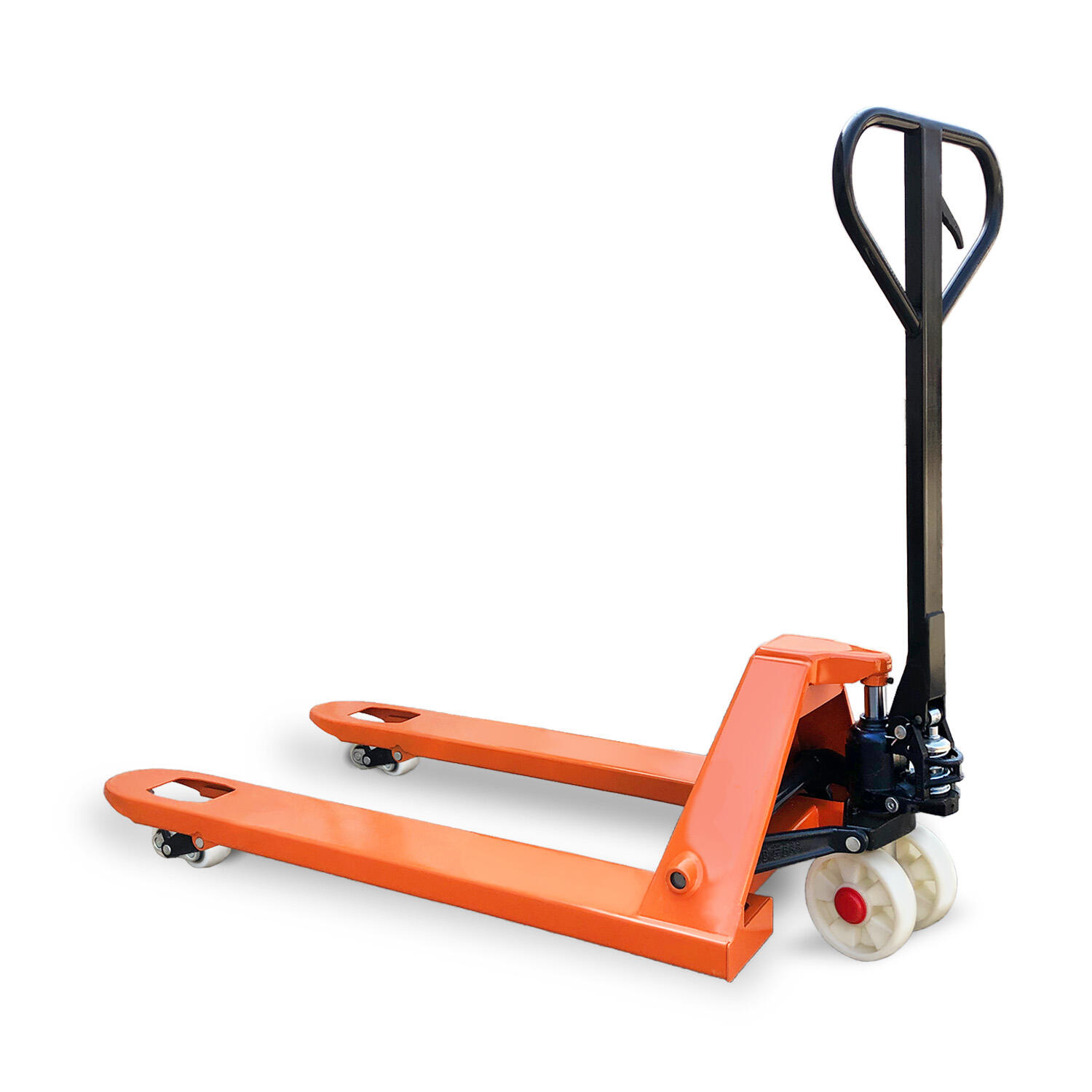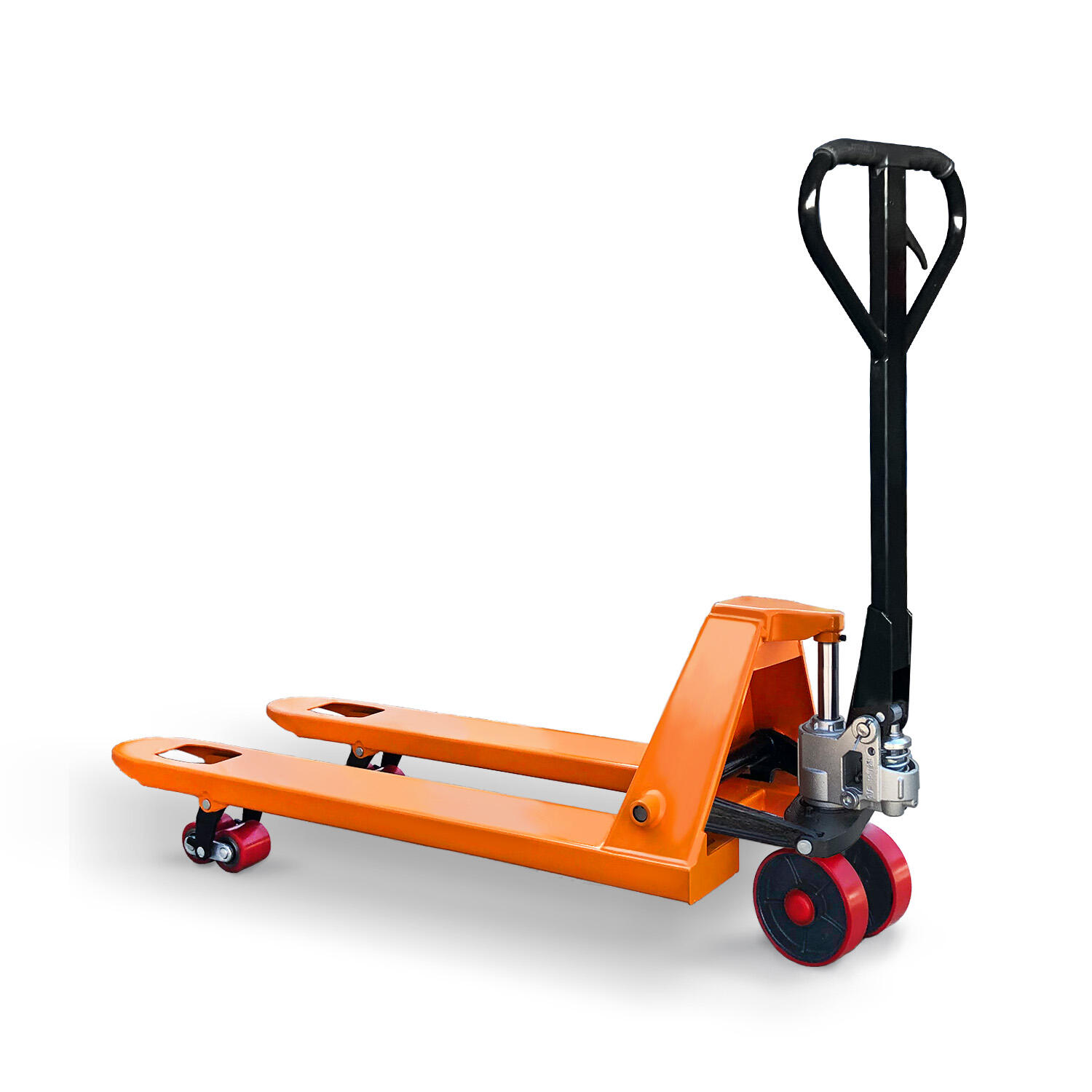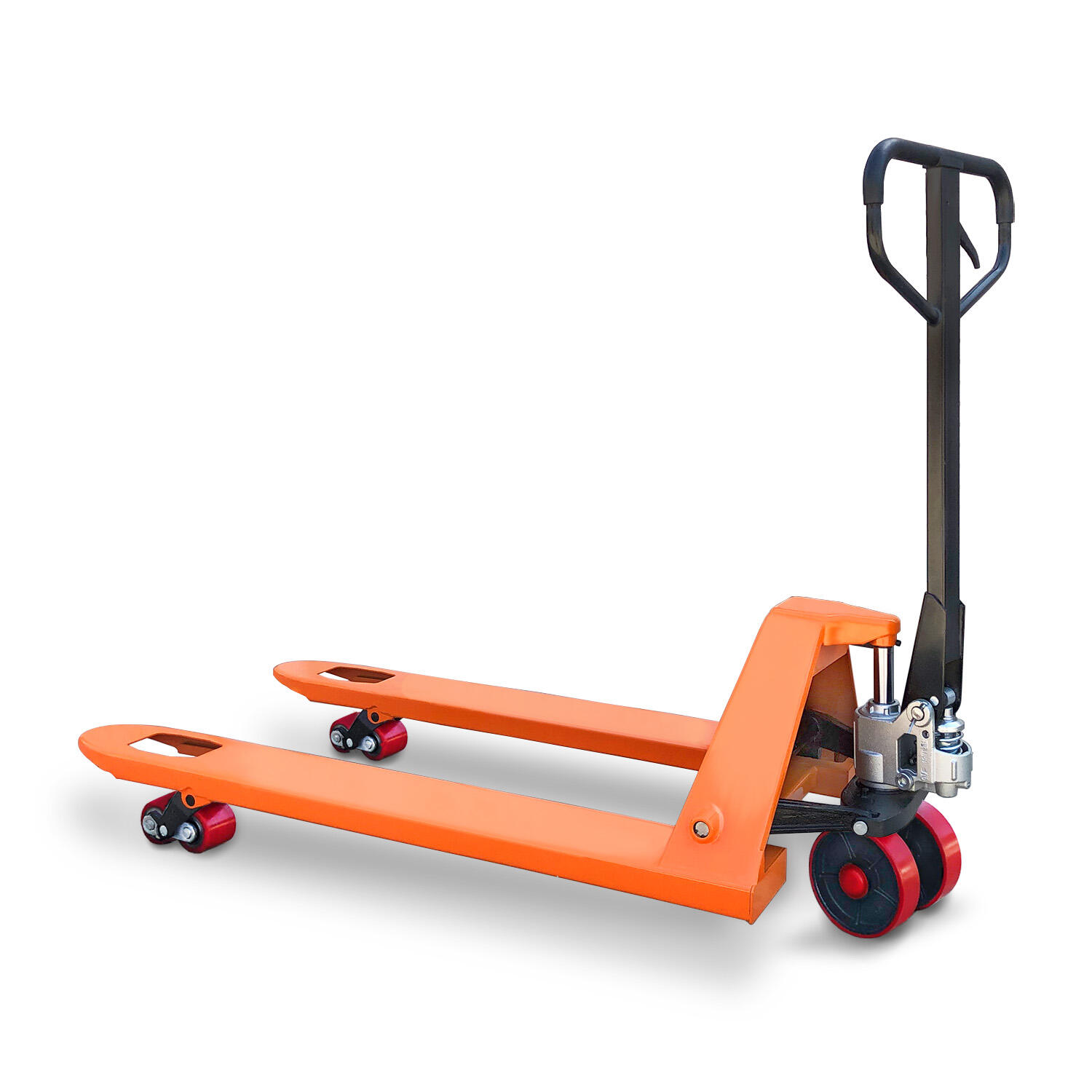A manual pallet jack is a vital piece of equipment in material handling, designed to lift and transport palletized goods with manual operation, serving as a cornerstone in warehouses, retail stores, manufacturing plants, and distribution centers worldwide. Its simplicity, durability, and cost-effectiveness make it an essential tool for businesses of all sizes, enabling efficient movement of heavy loads without the need for power sources. By combining a robust design with user-friendly features, the manual pallet jack streamlines daily operations, reduces physical strain on workers, and enhances overall productivity. The construction of a manual pallet jack is focused on strength and longevity, with a frame and forks made from high-grade steel. This ensures the equipment can withstand the rigors of daily use, including frequent lifting of heavy loads—typically ranging from 1,000 kg to 3,000 kg—and movement over various surfaces. The frame is engineered to provide stability, with a wide base that minimizes the risk of tipping, even when carrying uneven loads. The forks, which are the primary load-bearing components, are designed to slide smoothly under pallets, with tapered tips that allow easy insertion into pallet openings. They are usually spaced to fit standard pallet dimensions, but many models offer adjustable fork widths to accommodate different pallet sizes, from small skids to large industrial pallets, increasing versatility. The lifting mechanism of a manual pallet jack is powered by a hydraulic system operated via a hand pump. When the operator pumps the handle, hydraulic fluid is pressurized, causing the forks to rise to a height sufficient to clear the ground—typically 5 to 15 centimeters. This allows the pallet to be moved freely without scraping the floor, reducing friction and making transportation easier. The lowering process is controlled by a release valve, which slowly releases hydraulic pressure to lower the forks in a controlled manner, preventing sudden drops that could damage the load or cause injury. The hydraulic system is designed with sealed components to prevent leaks, ensuring consistent performance and minimizing maintenance needs. Maneuverability is a key advantage of the manual pallet jack, thanks to its compact size and efficient wheel design. It is equipped with four wheels: two small swivel casters at the front for easy turning and two larger fixed wheels at the rear for stability. The wheels are made from durable materials such as polyurethane or rubber, which provide a smooth ride over concrete, asphalt, and other surfaces while reducing noise and preventing damage to floors. This allows operators to navigate through narrow aisles, tight corners, and crowded spaces with precision, making it ideal for use in busy warehouses and retail environments where space is limited. Ergonomics plays a crucial role in the


